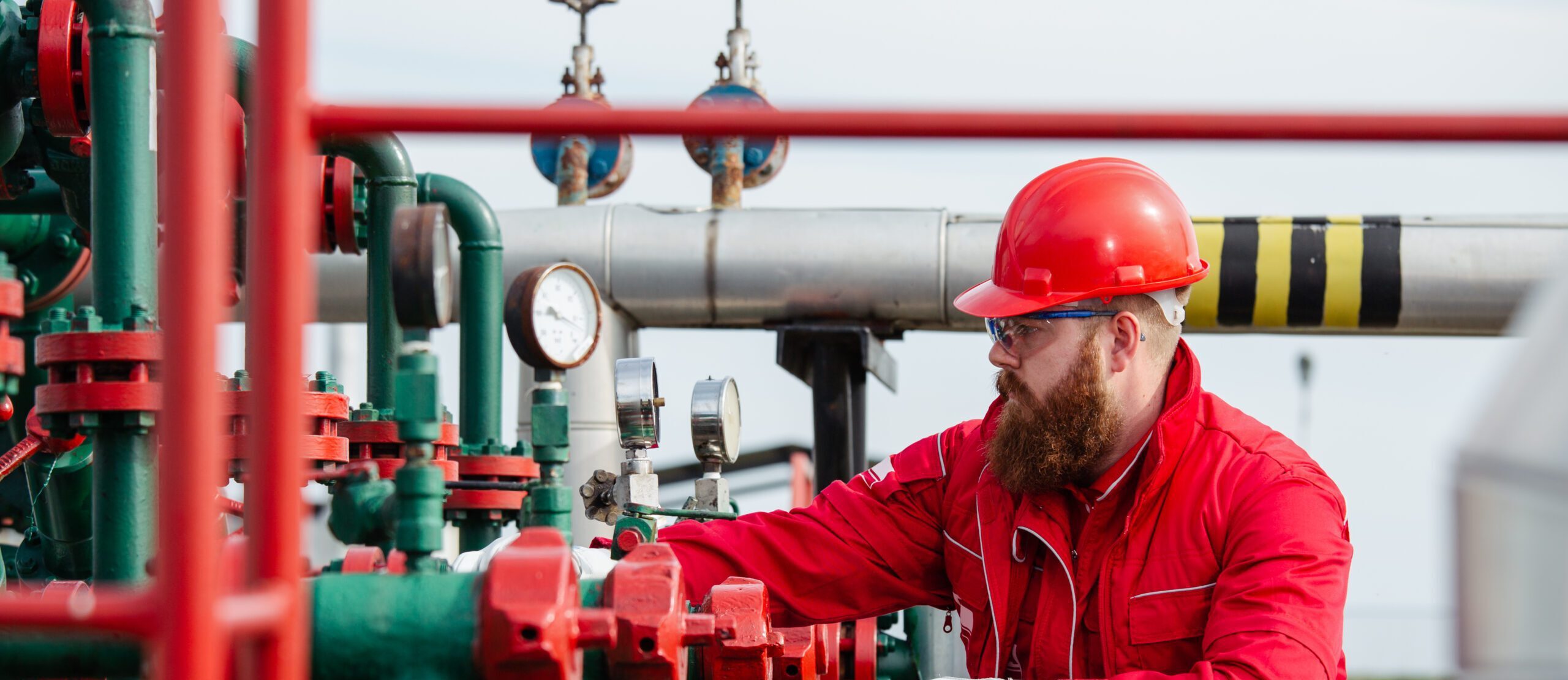Beyond Efficiency: Digital Transformation in Energy Industry Elevates Safety
Digital transformation. It’s been a buzzword across the energy industry, but what does it actually mean? Simply put, the digital transformation is the process of incorporating digital technologies to change how your business operates. In the energy industry, this could mean using IoT devices, using AI for predictive analytics, or even switching from paper records to cloud computing. Digital innovation is a crucial element in the transformation of the energy industry, enabling organizations to adapt and thrive amidst change.
These new technologies are driving efficiency gains, higher productivity and significant cost savings, while encouraging innovation. However, the true potential of digital transformation lies not just in operational efficiency, but in enhancing safety – a critical area of importance for the entire energy industry. From worker safety in remote locations to mitigating environmental risks, prioritizing safety within your company’s digital transformation strategy is essential to addressing the unique challenges of energy operations.
In this blog post, we’ll discuss:
- The current state of the digital transformation in the energy industry
- Technologies you can incorporate to improve safety
- Resistance to change and how to overcome it
Navigating the Digital Transformation in Energy Industry
Organizations in the energy sector have been digitizing their processes for years, and new technologies like AI and advanced data analytics are only speeding things up. Major players in the industry like Aramco, Repsol and Shell have made digital transformations a priority, hoping to achieve new levels of efficiency and improve safety across their operations.
However, digital transformation is a journey. Many organizations run into hurdles like legacy systems, siloed data, resistance to change and a lack of digital skills. Accuris is a trusted technology partner across the energy industry, helping companies break down data silos and gain instant access to engineering standards.
Despite the challenges, there is a growing recognition that the digital transformation goes beyond improving efficiency. There is untapped potential to enhance safety and mitigate risk in the high-stakes environments where energy companies operate.
Transforming Safety Practices with Digital Technologies in the Energy Industry
Ask any leader in the energy industry what keeps them up at night and safety will almost always be on their list. Preventing accidents and environmental disasters is a top priority for the industry – and a difficult one to achieve.
Fortunately, digital transformation provides the industry with many new options to improve safety. Digital technology acts as a key enabler for improving safety practices in the energy industry. Innovations like remote monitoring, AI-powered analytics and digital twins are just a few of the powerful new tools that companies can use to enhance safety practices while keeping workers and the environment safe.
Real-time monitoring and IoT devices
Connected devices, equipment and sensors make it easier than ever to gather data across energy industry operations and use that data to improve safety and manage energy consumption through real-time monitoring. SCADA systems serve as the central location for these connected technologies, providing real time data collection, analysis and control across vast and complex operations.
Pipeline leaks are costly, dangerous and unfortunately commonplace: more than 1,000 significant oil spills occurred in the United States between 2004 and 2023. Today, SCADA systems integrated with high-tech sensors in oil and gas pipelines continuously monitor flow rates, pressure levels and equipment conditions, alerting operators instantly to potential leaks or anomalies and enabling rapid response to prevent catastrophic incidents.
Wearable devices are another way to keep workers safe in high-risk locations like drilling rigs, offshore platforms and mines. SCADA systems can integrate data from these wearables, providing centralized oversight of workers’ exposure to harmful chemicals, dangerous noise or temperature conditions and even their exact locations in real time. This integration ensures that supervisors are immediately alerted if a worker experiences a hard fall or a sudden health emergency, enabling swift intervention and enhancing overall safety.
AI-powered predictive analytics
Advanced data analytics can help prevent HSE incidents before they occur. Manually analyzing equipment sensor data involves a considerable amount of tedious work, in addition to the time and labor required to troubleshoot and repair when incidents occur. AI can streamline this process by providing real-time insights into process performance, identifying inefficiencies, and suggesting improvements.
For example, AI can interpret data from pipeline meters that measure flow rate to identify abnormalities. Engineers can train the AI models to determine if data abnormalities are actual leaks or false alarms, so pipeline operators won’t waste time addressing non-issues.
In refineries, equipment like boilers and heat exchangers operate under high-pressure, high-temperature conditions and any malfunction can have catastrophic consequences. AI tools can analyze vast amounts of equipment sensor data to predict potential equipment failures before they happen. Predictive analytics can also optimize maintenance schedules, helping ensure that equipment like boilers and heat exchangers operate safely and efficiently.
A notable example is the Philadelphia Energy Solutions Refinery Explosion in 2019, where a heat exchanger failure led to a massive explosion and the release of hazardous hydrofluoric acid. This incident emphasizes the importance of predictive analytics in preventing such catastrophic failures. AI powered systems could have analyzed sensor data to detect early signs of corrosion or pressure anomalies, prompting timely maintenance and potentially avoiding the disaster.
Digital twin technology
Using digital twins is another way to keep energy industry workers safe, while reducing environmental impact and improving energy production operations. A digital twin is a virtual model of a physical asset or process – for example, a digital rendering of an offshore platform or a refinery.
Engineers can use digital twins and sensor data to monitor and optimize equipment instead of traveling to remote, dangerous locations like offshore platforms. This keeps additional workers out of high-risk environments and removes the physical and environmental risks of helicopter or boat travel. Predictive maintenance also helps prevent equipment malfunction, keeping the personnel in high-risk locations safe.
Overcoming resistance and technical hurdles in the digital transformation
Many engineers in the energy industry are wary of AI and new digital technologies, fearing job displacement or mistrusting their accuracy and reliability. And some engineers are simply accustomed to traditional workflows and view new digital tools as an unnecessary complication.
On the technology side, legacy systems present significant hurdles, often requiring costly and time-consuming upgrades before digital solutions can be integrated. Cybersecurity concerns are another issue, as increased connectivity introduces new potential for cyber threats. Additionally, operations in remote locations often face connectivity challenges, limiting the implementation of advanced digital tools.
Addressing these barriers requires a strategic approach, including robust employee training, clear communication of the benefits and investment in secure and scalable technology.
Beyond the buzzword: the real impact of the energy industry digital transformation
The digital transformation is far more than just a buzzword – it’s a practical and essential shift that’s driving meaningful change in the energy industry. By embracing digital tools, companies are improving efficiency and productivity, while unlocking innovative ways to enhance safety and reduce environmental impact.
No matter where you are on your digital transformation journey, one of our industry experts can help.

